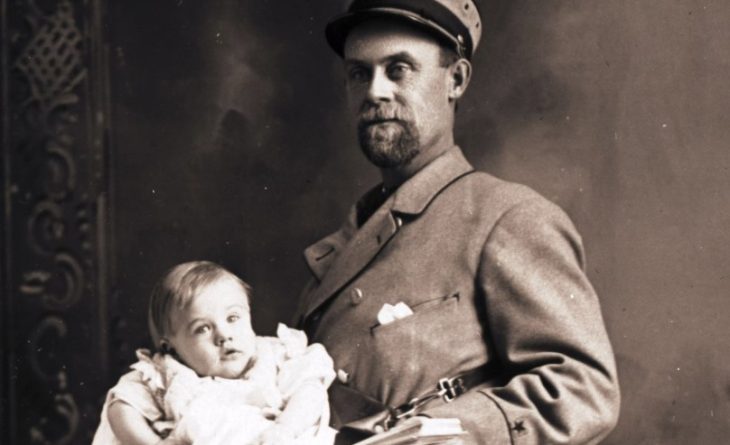
Word of the Day: Footle
Today’s word of the day, thanks to Words Coach (https://www.wordscoach.com/dictionary), is footle. Now, I have to admit right off that until I looked at the Words Coach website, I had never ever heard or seen the word footle; it came as quite a surprise. Mirriam-Webster says that this unusual word “will be more familiar to speakers of British English than it is to speakers of American English” (https://www.merriam-webster.com/dictionary/footle). The word is, apparently, pronounced / ˈfʊt l /, and it means “to act or talk in a foolish or silly way” (https://www.dictionary.com/browse/footle).
M-W continues its explanation of the word by saying, “Its likely source is the seldom-used footer, meaning ‘to waste time.’ That word is etymologically connected with fouter (also spelled foutra), a word referring to something of little value or someone worthless or bungling. But the link between footle and footer is speculative. What we can say with confidence is that footle is a verb of 19th century origin that—along with the derivative adjective footling (as in ‘a footling amateur’)—is still apt when discussing foolish or trifling people or things” (https://www.merriam-webster.com/dictionary/footle).
Etymonline.com’s discussion of footle is actually a bit more interesting. It says that the word appeared in English in “1892, from dialectal footer ‘to trifle,’ footy ‘mean, paltry’ (1752), perhaps from French se foutre ‘to care nothing,’ from Old French futer ‘to copulate with,’ from Latin future ‘have sex with (a woman),’ originally ‘to strike, thrust’ (which is perhaps from PIE root *bhau- ‘to strike’). But OED derives the English dialect words from foughty (c. 1600), from Dutch vochtig or Danish fugtig ‘damp, musty;’ related to fog (n.)” (https://www.etymonline.com/word/footle). I say it’s more interesting because I’m trying to figure out how the French went from “to copulate with” to “to care nothing.” Maybe it’s because they’re French.
On this date in 1920, according to On This Day, the “US Post Office says children cannot be sent by parcel post (after various instances)” (https://www.onthisday.com/events/june/13). Wait, what? Yes, you read that correctly.
In 1913, the USPS began “parcel post,” the mailing of packages: “While private delivery companies flourished during the 19th century, the Parcel Post dramatically expanded the reach of mail-order companies to America’s many rural communities, as well as the demand for their products. When the Post Office’s Parcel Post officially began on January 1, 1913, the new service suddenly allowed millions of Americans great access to all kinds of goods and services” (https://www.smithsonianmag.com/smart-news/brief-history-children-sent-through-mail-180959372/).
That very same month, “one Ohio couple took advantage of the U.S. Postal Service’s new parcel service to make a very special delivery: their infant son. The Beagues paid 15 cents for his stamps and an unknown amount to insure him for $50, then handed him over to the mailman, who dropped the boy off at his grandmother’s house about a mile away” (https://www.history.com/articles/mailing-children-post-office).
According to Nancy Pope, head curator of history at the National Postal Museum, there were “about seven instances of people mailing children between 1913 and 1915, beginning with the baby in Ohio. It wasn’t common to mail your children, yet for long distances, it would’ve been cheaper to buy the stamps to send a kid by Railway Mail than to buy her a ticket on a passenger train” (ibid.). She also found that “people who mailed their children weren’t handing them over to a stranger. In rural areas, many families knew their mailman quite well. However, those two viral photos you might have seen online of postal workers carrying babies in their mailbags were staged photos, taken as a joke. A mailman might have brought a swaddled child who couldn’t walk, but he wouldn’t have let a diaper-wearing baby sit in a pile of people’s mail” (ibid.). In a couple of instances, six-year-old children were mailed, one from Florida to Virginia, again because was a lot cheaper to send them by mail than to buy a seat on a train for them.
According to United States Postal Service historian Jenny Lynch, “’Mail carriers were trusted servants, and that goes to prove it…. There are stories of rural carriers delivering babies and taking [care of the] sick. Even now, they’ll save lives because they’re sometimes the only persons that visit a remote household every day’” (https://www.smithsonianmag.com/smart-news/brief-history-children-sent-through-mail-180959372/).
“Finally, on June 14, 1913, several newspapers including the Washington Post, the New York Times, and the Los Angeles Times all ran stories stating the postmaster had officially decreed that children could no longer be sent through the mail. But while this announcement seems to have stemmed the trickle of tots traveling via post, Lynch says the story wasn’t entirely accurate” (ibid.). Actually, there were regulations against mailing children before 1920, but some of the more rural areas kept doing it anyway. That is, until June of 1920.
When you look more into the details, the sending of children with mail carriers almost makes sense. It’s just that initial statement, that the mailing of kids by parcel post was made illegal on such-and-such a date, makes you think that some people were footling amateurs when it came to parenting.
Today’s image is “A staged photo of a U.S. postman carrying a baby boy along with his letters, circa 1900s. Credit: Vintage Images/Getty Images” (https://www.history.com/articles/mailing-children-post-office).